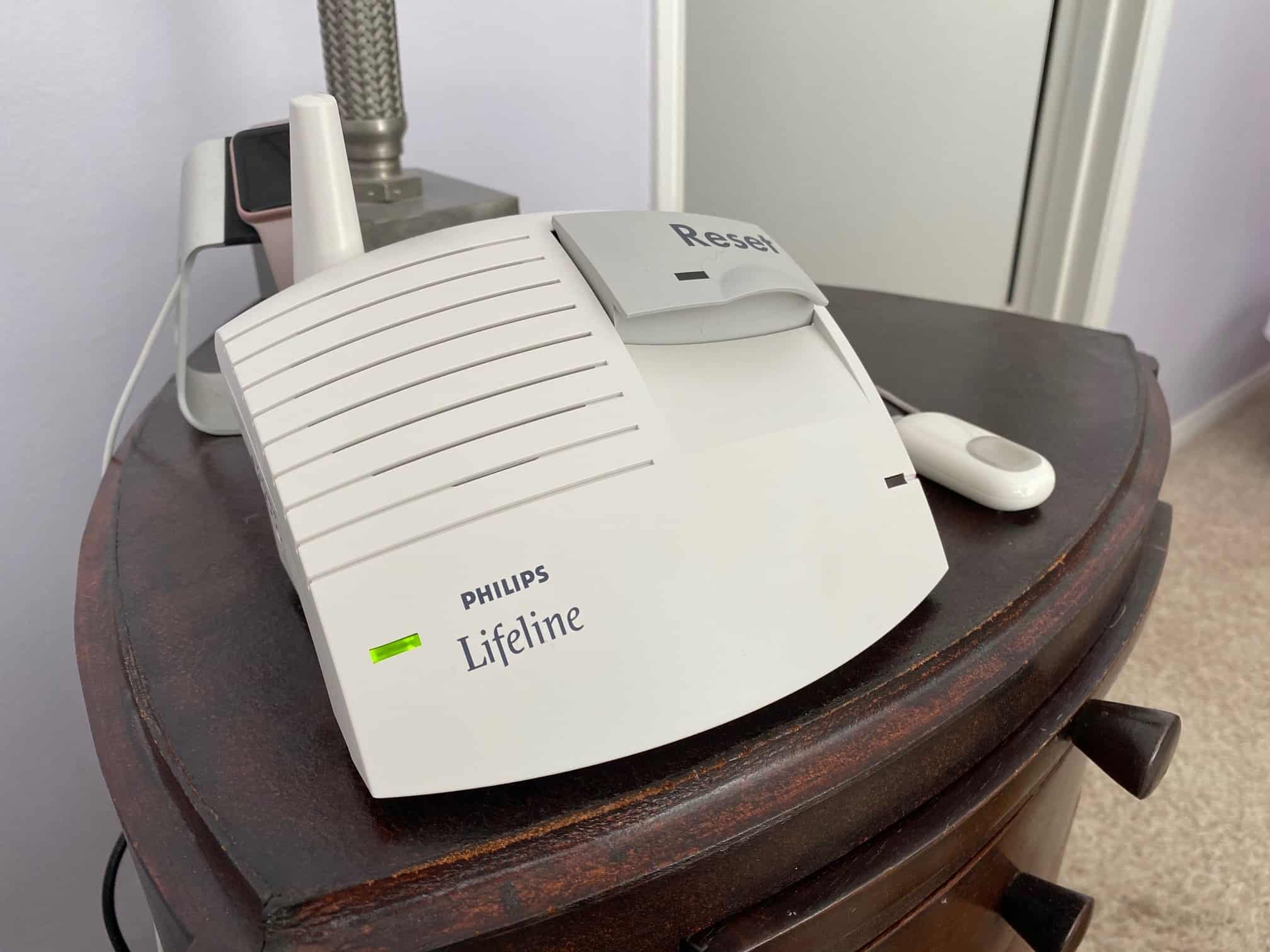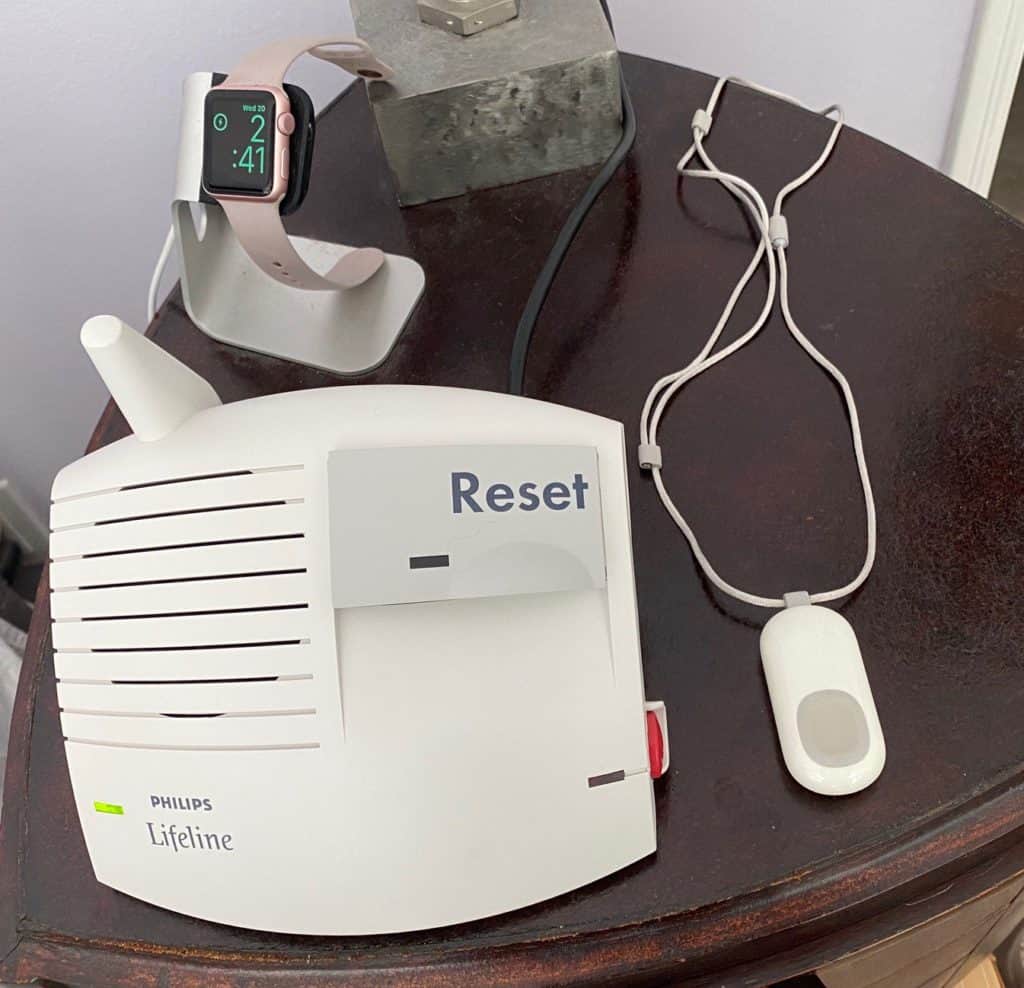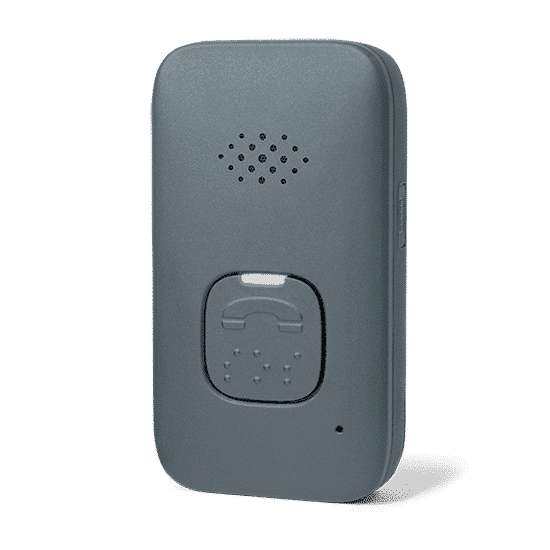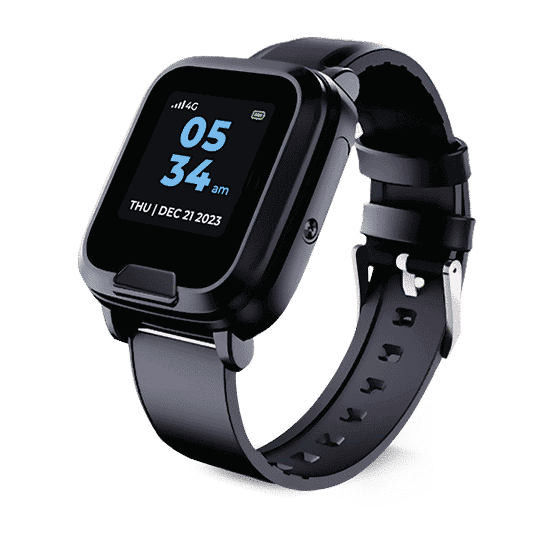Lifeline Medical Alert System Review 2024
Lifeline offers a few at-home and on-the-go systems, perfect for those who want to keep things simple.
SeniorLiving.org is supported by commissions from providers listed on our site. Read our Editorial Guidelines
SeniorLiving.org is supported by commissions from providers listed on our site. Read our Editorial Guidelines
Did you know that Lifeline was the first company to market a medical alert system in North America over 50 years ago?1 Fast-forward to today, and Lifeline continues to be an industry leader with a complete line of medical alert systems, from HomeSafe for in-home use to On the Go, an all-in-one wearable system designed for active older adults.
During my time as SeniorLiving.org’s Editor-in-Chief, I’ve tested many medical alert systems, and I was excited to try out Lifeline’s systems for myself. I ordered both the HomeSafe and On the Go systems to give them a test drive. If you decide on the most basic choice, HomeSafe, you’ll want to conduct a range test to make sure it covers every room in the house and any areas directly outside the home, such as the front porch or garage. I found that both products were easy to set up and even easier to use. These are high-quality medical alert systems from a company with decades of experience.
Pro Tip: While Lifeline offers reliable systems, there are several other providers that offer more variety and bang for your buck. Want to find out which providers offer the best value? Check out our list of the best medical alert systems.
What We Like About Lifeline
- Trusted industry name: Because Lifeline has been around for nearly half a century, they’re a name in the industry you can trust.
- Lifeline Cares app: Lifeline offers an app called Lifeline Cares that lets you build a care circle of friends and family you want to keep in the loop. It also allows you to personalize call responses during an emergency to meet your needs.
- Auto equipment replacement: When the battery in your help pendant runs low, it sends an alert to Lifeline, and the company automatically sends you a new replacement.
- Professional installation offered: Alert systems are designed to be easy to install, but I like that Lifeline still offers a professional installation option. Sometimes, it’s good to get a walkthrough of the system by a representative. MobileHelp's packages and Medical Guardian's systems don’t have this option, so I appreciate that they give users a choice.
What We Dislike About Lifeline
- Great value, but not the least expensive: Lifeline’s lowest-priced option, HomeSafe, is a few dollars higher than the entry-level pricing for Bay Alarm Medical systems. If you’re comfortable paying a bit more per month than the industry average, Lifeline’s systems are high quality, simple, and reliable.
- Activation and installation fees: Startup costs are involved. If you’d like to consider a system without any extra fees, consider providers we've reviewed like Aloe Care Health.
- Uses AT&T service: Lifeline cellular and mobile systems use AT&T’s network, so you’ll need to have strong AT&T service if you want a cellular system. If you’re looking for a Verizon-based system, check out our Lively medical alert review.
Is Lifeline Right for Me?
Lifeline is a trusted name in the medical alert industry with a long history of protecting seniors. However, these systems don’t offer the latest technology, and they aren’t as sleek as some of the other options on the market. Plus, they can get pricey. Check out our top picks for medical alert systems below to compare your options.
Overview of Lifeline
The Buying Experience
I highly recommend calling customer service to place your order. Lifeline’s website has a lot of information, but it’s helpful to talk through your specific situation with an expert since unnecessary add-ons can add up. Inquire about seasonal discounts, and tell the service representative exactly when and where you’ll need protection (in the yard, basement, grocery store, etc.).
Buyer’s Tips: Call the company and ask if there are any fees they can take off your bill. You’d be surprised how far a quick call and a polite attitude will take you. Lifeline often waives the $50 activation fee and $29.95 shipping fee for new customers.
Lifeline also has an online chat feature on the website. I tried this feature to ask about additional fees. All I had to do was click on the black and blue circle on the bottom right of the screen, and I was connected with a representative in a few seconds!
Click the chat box icon on Lifeline's website to talk with a representative.
Setting Up My Systems
HomeSafe
To set up the HomeSafe system, I plugged the base station into a power outlet and a phone jack and waited for the light to come on. Then I pressed the button on my pendant, and the base station beeped loudly and said it was connecting to the response center. During my test, the base station repeated this message every few seconds until an agent picked up and asked if I needed help. I said that I was testing the system. The agent acknowledged my answer, then he ended the call, and that was it!
It’s important to walk to each room of the house to see if the pendant is in range of the base station. To do this, just hold down the reset button on the base station and release it to go into test mode. Then, you’ll have four minutes to walk around the house and press the pendant button to make sure the base station receives the signal.
FYI: If you have any concerns about the DIY setup, Lifeline provides a professional installation option, including an in-house visit that lasts about two hours and costs $99.

Philips Lifeline HomeSafe
This system also comes in a cellular model, so if you don’t have a landline connection, you can still use HomeSafe. Just keep in mind that the cellular system runs on AT&T’s network, so you’ll need an AT&T signal where you live for the system to work. Otherwise, it should function the same.
On the Go
On the Go comes with a mobile pendant, charger, and manual. I simply plugged in the charger, set the pendant on it, and waited until the pendant light turned from flashing green (charging in progress) to solid green (fully charged). From there, I pressed the mobile help button to get connected to Lifeline's 24/7 response center. They picked up in about 15 seconds and confirmed I was OK. The system was fully activated and ready to go. You don’t need to do a range test with the On the Go, although you should walk through your house, yard, or garage, where you have concerns about cell coverage, and see if you can place a test call.
Contracts and Warranty
Lifeline offers all of its systems on a month-to-month basis, which means you can cancel your service at any time without penalty. There is an automatic payment option available. By filling out a form, you can have Lifeline directly debit your bank account each month.
Lifeline offers all of its systems on a month-to-month basis, which means you can cancel your service at any time without penalty. Lifeline has a 30-day, full-refund guarantee, which I appreciate. They provide a one-year warranty for the On the Go system, covering normal wear and tear, which is on the shorter end of included warranties for the industry (Bay Alarm has a lifetime warranty for certain products). Simply register your device after you receive it to activate the warranty.
Lifeline Systems at a Glance
| Name | Price | Key features | Type of system | Additional fees |
|---|---|---|---|---|
| HomeSafe landline | $29.95 per month | – In-home system with 24/7 professional monitoring – Waterproof – Two-way talk |
Landline | – $99.95 setup fee – $29.95 shipping – $99 technician installation (optional) |
| HomeSafe cellular | $39.95 per month | – In-home option with 24/7 monitoring – Runs on AT&T cellular network – Waterproof – Two-way talk |
Cellular | – $99.95 setup fee – $29.95 shipping – $99 technician installation (optional) |
| On the Go | Standard: $44.95 per month Mini: $49.95 per month |
– All-in-one mobile system for on-the-go protection – 24/7 professional monitoring – Runs on AT&T network and GPS technology – Two-way talk – Waterproof |
Cellular | – $99.95 setup fee – $29.95 shipping – $99 technician installation (optional) |
| Smartwatch | $39.95 per month | – Discreet watch – 24/7 professional monitoring – Waterproof – Two-way talk – Heart rate and step tracking |
Cellular | – $29.95 shipping – $99 technician installation (optional) – $159 device fee |
Lifeline System and Product Details
HomeSafe
Cost
The HomeSafe landline model is for in-home use and is ideal for older adults on a budget, as it’s the cheapest system Lifeline offers, starting at $29.95 per month. It functions well in a small, one-story home. You’ll want to conduct a range test if you own a larger home. For an additional $15, you can add automatic fall detection. This feature is best for older adults who have a high risk of falling.
Quick Tip: Lifeline’s HomeSafe with AutoAlert models come with all of the same features and functions as the HomeSafe standard systems. The only difference is that the AutoAlert systems include automatic fall detection, while the standard models don’t.
The system also comes in a cellular option, which costs $10 more per month. Thinking of adding fall detection and getting the HomeSafe Standard Cellular system? You’ll actually pay more for this configuration than with the On the Go (covered below), so unless you have this more basic landline use case, look closely at the On the Go to save every month.

Testing our Lifeline equipment
Equipment
Out of the box, the system comes with a base station that acts as a communicator to the Lifeline emergency response center and a wearable, waterproof pendant or wristband (your choice!). The pendant itself is lightweight and about the size of a half-dollar. If you ever need help, simply press the button on your pendant or wristband. You’ll then be connected to Lifeline’s emergency response center through the base station. Easy peasy!
Service and Monitoring
HomeSafe is Lifeline’s product for at-home use, and you can choose between a cellular or landline connection. If you’re more of a homebody, we’d recommend this system. You can also add automatic fall detection for an additional $15 per month. This feature triggers an emergency call if your pendant’s sensor detects movements consistent with a fall. You also have access to the Lifeline Cares mobile app with this system. This app is great for caregivers or family members who want to stay in the loop about your well-being, as it lets them check on the status of your system and send notes between users.
On the Go
Cost
On the Go is an all-in-one help button that comes in a standard and mini version. Costs range from $44.95 to $49.95 per month. For $99, you can choose to add professional installation, though we don’t think this is necessary for most users; Lifeline’s systems are simple to set up. The On the Go device offers the best value and versatility of all the Lifeline systems — you can wear it at home or out and about.

Lifeline On the Go
Equipment
On the Go is a small mobile unit with a help button, a two-way talk feature, and built-in fall detection. It comes with a mobile pendant, charger, and manual. I think the On the Go mobile device is an excellent system for active older adults. You can wear it while shopping, taking a walk, or grabbing lunch with friends. It’s an all-in-one wearable system, so just throw it on like a necklace and you’re set. The pendant is lightweight, and it’s one of the smaller all-in-one systems I’ve seen in the industry. You could easily tuck it into a sweater or pocket and no one would even know you’re wearing it!
Service and Monitoring
On the Go works wherever there is reliable AT&T service throughout the continental United States. The system comes with GPS and cellular technology, so help will be sent straight to you no matter where you are — all you have to do is press the pendant’s help button! If you opt for automatic fall detection, then no matter where you are, you can rest easy knowing On the Go will detect a fall and send help, even if you can’t press your help button. This mobile system includes access to the Lifeline Cares mobile app.
Smartwatch

Lifeline Smartwatch
Cost
Lifeline’s latest system, the Smartwatch, costs $39.95 per month. This places the system in the middle of the company’s lineup in terms of price. It’s also Lifeline’s only system that also has a device fee, which is $159. You can save the equivalent of $5 per month by paying annually or $3 per month by paying quarterly.
Equipment
The Smartwatch is just as the name suggests: It looks like a normal smartwatch and features an emergency help button. You can also check your heart rate and track your steps — perfect for supporting an active lifestyle. This is the first truly high-tech, sleek system I’ve seen from Lifeline, so I’m a big fan!
Service and Monitoring
Similar to Lifeline’s other On the Go systems, the Smartwatch runs on a cellular connection and provides 24/7 monitoring wherever you go. All you have to do is press your emergency button to call for help. Like Lifeline’s other systems, you can add fall detection for $15 monthly, making it a solid option for active seniors who want something discreet.
Compare Lifeline to Other Providers
Add-on Features and Accessories
Fall Detection
You can add fall detection to any Lifeline medical alert system for an extra $15 per month. This feature can detect falls and call for help, even if you are unable to press your help button.
Key Lockbox
Opting to add a key lockbox to your system gives first responders quick and easy access to your home. If you’re not able to get to the door during an emergency, first responders will have to knock the front door down. You’ll have to deal with the mess and pay for a new front door, which is just a hassle. The monthly device fee is $2.95 at checkout.
The Bottom Line on Lifeline
Overall, Lifeline offers easy-to-use, reliable alert systems. They’re great for those who want a no-brainer system with no frills attached. As for which Lifeline product to choose, I prefer the On the Go, as you can use it anywhere at home or on the go, and it’s incredibly easy to set up, maintain, and use in an emergency.
If you’re on a tight budget, the HomeSafe system is the cheapest option and offers high-quality at-home protection. Once the product arrives, be sure to test the unit at home for coverage. If you don’t feel comfortable doing so on your own, go with the professional installation option.
All of my interactions with Lifeline employees, including their customer service team, the Lifeline Chat, and the response center, were very positive. Lifeline also received an A+ rating from the Better Business Bureau, a big plus in my book. According to Lifeline, many of their team members have been with the company for over 25 years, which says a lot about the quality of service and how the company treats its employees.
Our Methodology
Our team evaluates many key decision-making factors that users should consider when choosing a medical alert system. These factors include reliability, ease of use, customer service, price and value, average response times, and available features. We test each system to give readers a hands-on look at our experience with the product. We also ask older adults for feedback on the systems whenever we can. Then, we use all of our research and product testing to give each company a star rating out of five, making it easy for readers to compare systems. Visit our medical alert system methodology guide to learn more about the review process.
Frequently Asked Questions About Lifeline
-
How much does Lifeline cost per month?
Lifeline alert systems start at a monthly cost of $29.95, and they range up to $49.95 per month for certain packages.
-
What is the return policy for Lifeline?
You can return your Lifeline system within 30 days of purchase for a full refund. None of the alert systems require a contract, so you can also cancel your service and return your Lifeline equipment at any time.
-
Is Lifeline waterproof?
Yes, all of the Lifeline help pendants are waterproof, so they can be worn in places like the shower, bath, or pool.
-
Does Lifeline need a landline?
Some Lifeline alert systems need a landline to connect to the monitoring station. However, some of the company’s systems run on an AT&T cellular connection, so it depends on the package that you choose.
Lifeline. (2023). Our History.






